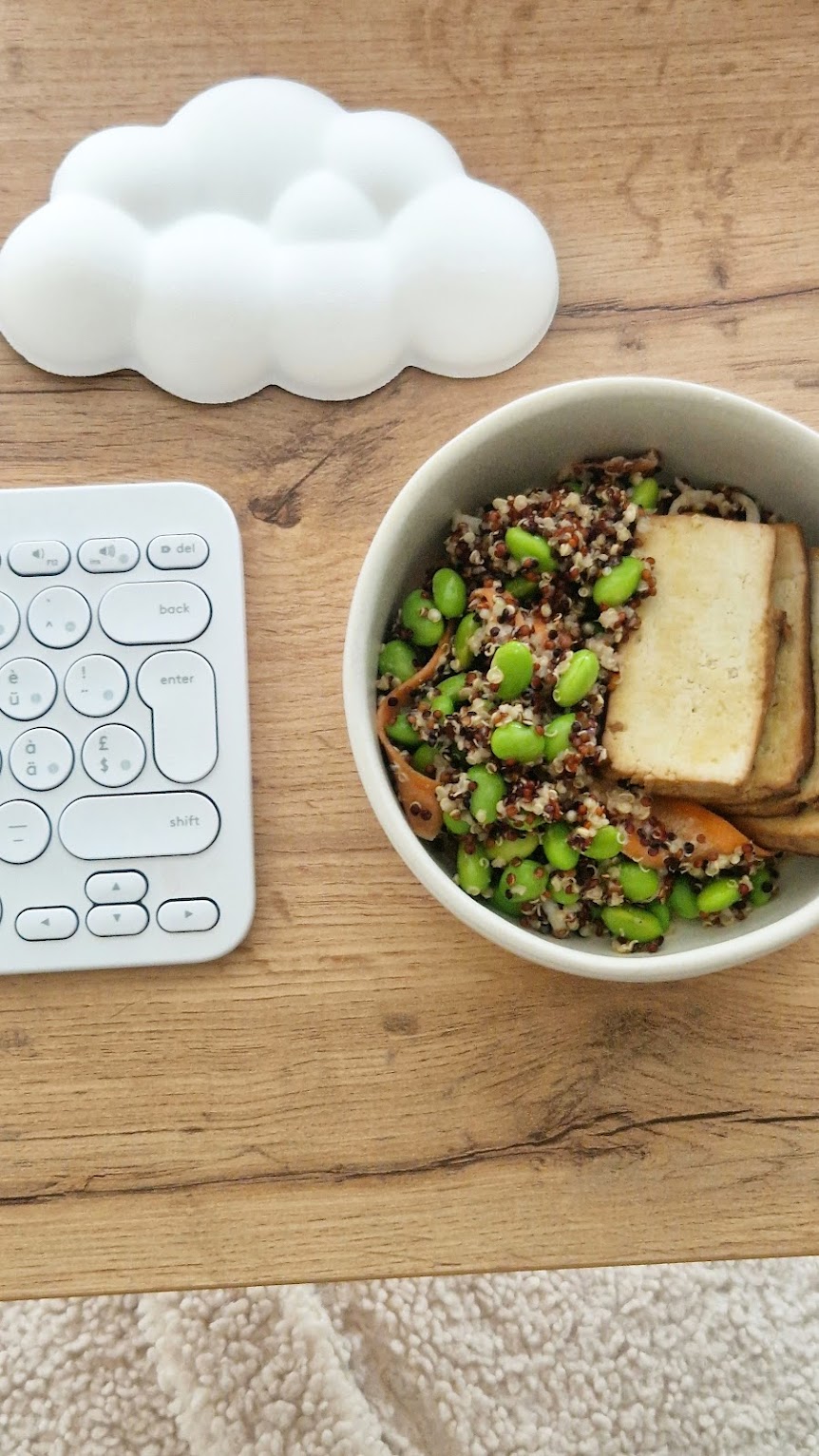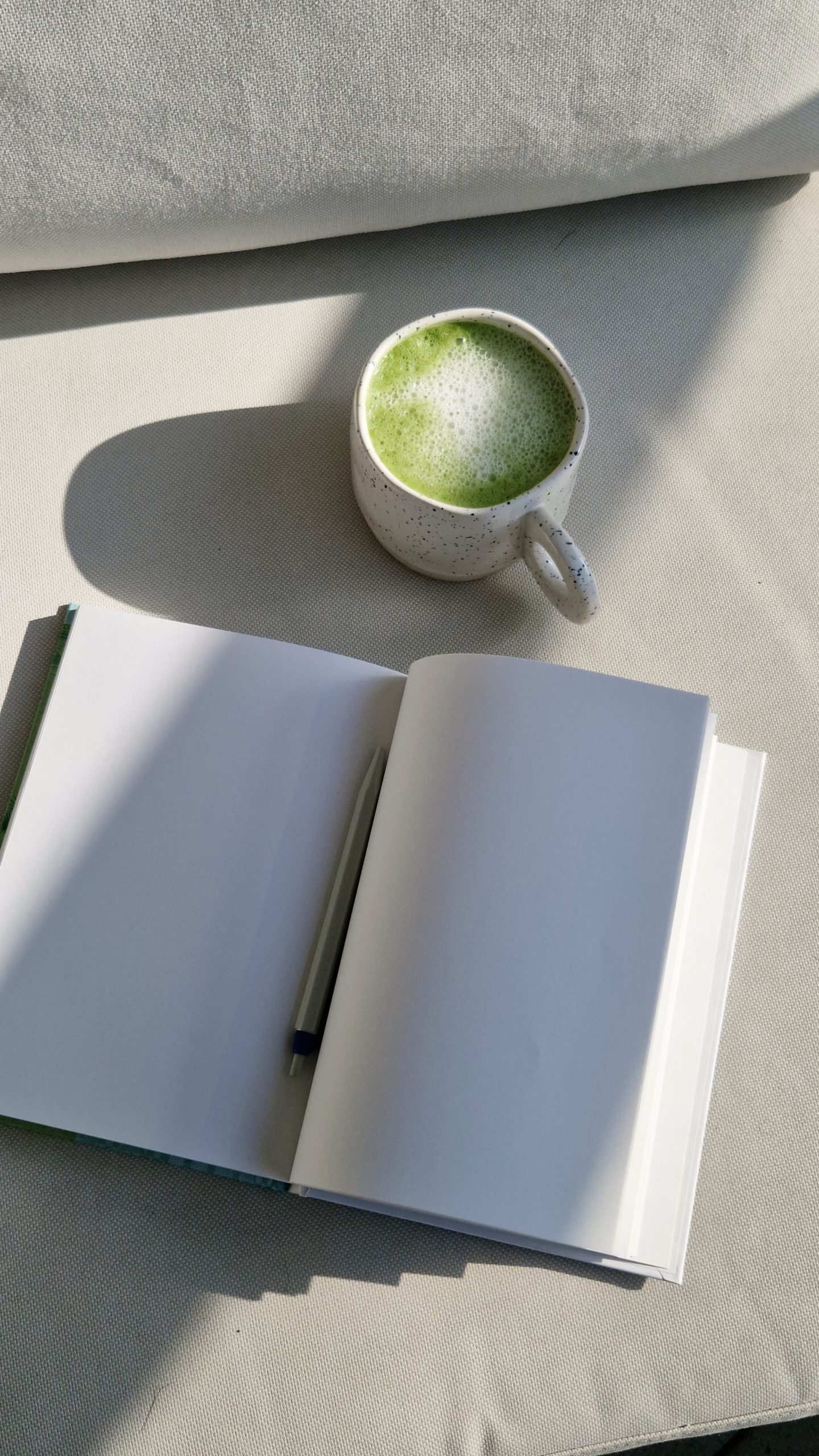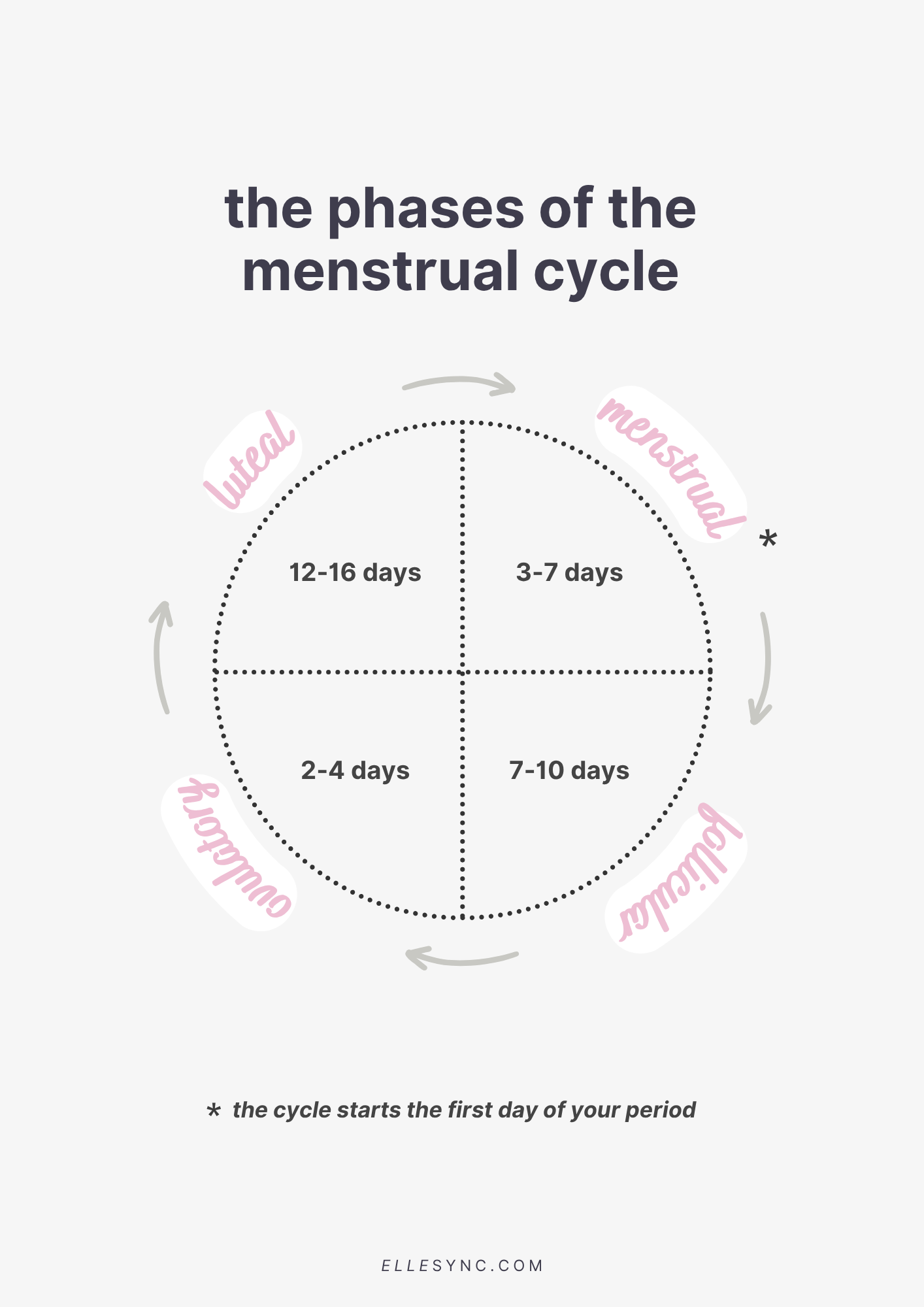Period cramps (or dysmenorrhea) are among the most common symptoms women experience during their reproductive years. But just because they’re common doesn’t mean they’re normal.
In this article, I’ll explain how to treat period cramps naturally — because yes, it’s possible, and I’m living proof!
Like many women, I lived with painful periods for years, thinking it was “just part of having a uterus.”
After doing tons of research and getting certified in hormone health, I can confidently say that’s false.
Period pain is not normal — it’s often your body’s way of signaling an imbalance.
And as you can imagine, lifestyle plays a big role. Improving it can reduce — or even eliminate — period cramps, and that’s exactly what I’m sharing in this article.
This article is for informational purposes only and isn’t a substitute for medical diagnosis or care.
Why Do We Have Period Pain?
In most cases, period pain is a sign of a hormonal imbalance.
More specifically, an imbalance between estrogen and progesterone.
This mainly happens in the luteal phase (one to two weeks before your period).
At this stage of the cycle, progesterone is supposed to rise and let us benefit from its anti-inflammatory and relaxing properties.
Period pain (just like premenstrual syndrome) happens when there is too much estrogen compared to progesterone.
- Either because there is too much estrogen (the body didn’t manage to eliminate the excess)
- Or because there is too little progesterone (the body can’t produce enough of it)
It’s also possible and quite common for it to be a combination of both.
The role of prostaglandins
To be precise, it isn’t the hormonal imbalance that causes pain in itself, but rather small chemical substances called prostaglandins.
These are released during menstruation to help the uterus contract and shed the lining.
There are two types of prostaglandins:
- Pro-inflammatory prostaglandins, which cause strong and painful contractions, sometimes accompanied by nausea, diarrhea, or headaches (PMID: 32069859)
- Anti-inflammatory prostaglandins, which relax the muscles and reduce inflammation (PMID: 19240648, 3297513)
When there are too many pro-inflammatory prostaglandins compared to anti-inflammatory ones, contractions become more intense, blood flow is reduced, and the pain increases (PMID: 288294)
What causes this ratio to be imbalanced?
The imbalance between estrogen and progesterone that I mentioned earlier (PMID: 6596911)
The link between estrogens and prostaglandins:
Estrogens stimulate the proliferation of the endometrium (uterine lining). The more estrogens there are (and especially if there is an excess), the thicker the endometrium becomes.
Result: during menstruation, more prostaglandins are released to break down and expel the endometrium, including pro-inflammatory prostaglandins that cause pain (PGF2α, PGE2) (PMID: 37840555).
The link between progesterone and prostaglandins:
Progesterone is naturally anti-inflammatory and moderates the production of pro-inflammatory prostaglandins (PMID: 32069859).
If it is low, it cannot play its anti-inflammatory role and, as a result, uterine contractions are stronger and more painful (DOI: 10.3390/ijerph17041191).
The good news is that we can improve the estrogen-progesterone balance and therefore the production of anti-inflammatory prostaglandins through changes in diet and lifestyle.
How to treat period cramps naturally
I want to clarify that I’m sharing what has worked for me and what could work according to research findings.
Keep in mind that every body is different. No matter what is said here or elsewhere, what truly matters is experimenting to understand what works for your own body.
As we saw earlier, the main goal is to reduce inflammation and maintain a healthy balance between estrogen and progesterone.
1. Nutrition
You are what you eat, and the quality of your food has a direct impact on your hormones and the inflammation in your body.
In my opinion, nutrition is the easiest change to make. Sometimes, just adjusting a few habits is enough to see major improvements.

Inflammatory foods to avoid
As you may already know, some foods can promote inflammation:
- Refined sugars (PMID: 36119103, 29757229, 16904534)
- Ultra-processed foods (PMID: 38022349, 36986276)
- Alcohol: it increases inflammation and disrupts the liver’s elimination of estrogen (PMID: 38665743, 36852781)
Gluten, dairy, coffee, and other foods can also be inflammatory for some people.
The key here is learning to understand your body and how it reacts to certain foods.
Anti-inflammatory foods and nutrients to prioritize
Simply put, nature is your ally. All unprocessed foods such as fruits, vegetables, nuts, herbs, and seeds are beneficial for reducing inflammation and maintaining a healthy balance of prostaglandins.
Some foods can have a much stronger effect on inflammation, for example:
- Ginger (PMID: 32436242)
- Turmeric (PMID: 34754179)
- Fennel (PMID: 33182553)
- Green tea (PMID: 27634207, 38974590)
As you can imagine, it’s still important to have a varied diet, particularly to access the nutrients below that help manage inflammation.
- Omega-3s, found in fatty fish, flax seeds, chia seeds, walnuts, or canola oil.
Several studies have shown that omega-3s reduce the severity of menstrual cramps as well as inflammation caused by prostaglandins (PMID: 8623866, 7588501, 29542390, 28356030).
- Magnesium, found in pumpkin seeds, almonds, spinach, peanuts, dark chocolate (70%+), black beans, lentils, and avocado.
Some studies show that magnesium helps reduce menstrual cramps by reducing inflammation and relaxing uterine muscles (PMID: 36600872, ISSN: 2330-4456, DOI: 10.1684/mrh.2017.0419).
- Vitamin D, found in fatty fish, egg yolks, and red meat.
It may act on receptors in the uterus to inhibit prostaglandin synthesis and reduce menstrual pain (PMID: 33918317, 34010550).
- Vitamin B12, found in fish, red meat, eggs, and dairy products.
It also helps reduce inflammation by inhibiting the COX enzyme responsible for prostaglandin production (PMID: 37174831, DOI: 10.20473/imhsj.v8i3.2024.289-299).
- Vitamin E, found in almonds, hazelnuts, sunflower seeds, avocado, sunflower or olive oil, and spinach.
It may help reduce prostaglandin production and therefore ease menstrual pain (PMID: 33918317, 36513486).
Of course, it’s always better to get these nutrients through your diet. If that’s not enough, you can also supplement after consulting your doctor.
Here are the links to the vitamins I take and recommend: omega-3s, magnesium, vitamin D, vitamin B complex, vitamin E.
These links are affiliate links. If you order from iherb.com, use code CBY2374 at checkout for a discount on me!
Foods to favor for estrogen-progesterone balance
As we’ve seen, the balance between estrogen and progesterone is directly linked to prostaglandins and period cramps.
Some foods are particularly beneficial for boosting progesterone and eliminating excess estrogen.
Foods that support progesterone production:
- Eggs: contain (beneficial) cholesterol, a precursor for steroid hormones including progesterone.
- Green vegetables: rich in magnesium and vitamin B6, essential for hormone production.
- Healthy fats found in avocado, nuts, or olive oil: necessary for hormone synthesis.
- Zinc-rich foods like pumpkin seeds, cashews, or seafood: support ovulation and thus progesterone production.
- Complex carbs such as quinoa, oats, sweet potatoes, or brown rice: help stabilize blood sugar and prevent insulin spikes that can disrupt progesterone production.
It’s especially beneficial to eat these foods during the luteal phase, when progesterone should naturally rise.
Foods that help eliminate excess estrogen:
- Fiber found in vegetables, fruits, seeds, and legumes: supports estrogen elimination through stool.
- Cruciferous vegetables like broccoli, cauliflower, or Brussels sprouts: contain compounds that help the liver metabolize estrogen.
- Lemon and garlic: support liver detoxification and hormone elimination.
It’s especially beneficial to eat these foods during the ovulatory phase, when estrogen levels peak.
2. Stress Reduction
Stress is just as important as diet when it comes to hormonal balance and inflammation.
Basically, it all revolves around cortisol (the stress hormone). When you’re under prolonged stress, your body keeps releasing it continuously.
Here’s what can happen when cortisol stays high for too long:
- It messes with hormonal balance: your body prioritizes cortisol production over female hormones, especially progesterone, which is always “in competition.”
- It increases inflammation: too much cortisol eventually makes tissues less responsive to its anti-inflammatory effects, keeping inflammation going in the body.
- It throws off your cycle: stress disrupts the hypothalamic-pituitary-ovarian axis, which can imbalance ovulation and overall hormone production.
In short: too much stress = less progesterone, more hormonal imbalance, more inflammation.
As a result, it strongly contributes to period cramps (PMID: 15550609, 40188069, 40416281).
How to identify your sources of stress
As I always like to say, stress isn’t just about having too much work or the pressure to pass exams.
Stress, especially when chronic, can come from other factors such as:
- Not eating enough or constantly being on a diet
- Exercising too much or too intensely
- Having low self-esteem
- Putting too much pressure on yourself daily
- Having unresolved traumas
- Being in toxic relationships
- Not doing work that fulfills you
The practices that will help you will vary greatly depending on the source of your stress.
Sometimes, taking 15 minutes a day for yourself is enough. Other times, you may need support from a professional over several months.
Only you can define what you need. The first step is always becoming aware of your physical, mental, and emotional state.
Here are some questions to help you gain more clarity:
- How do you feel on a daily basis? (physically, mentally, emotionally)
- What is your relationship with yourself? With your body? With food?
- How is your relationship with others?
- What worries you?
- What frustrates you?
- Do you have trouble saying no? In which situations?
- Which moments of the day do you enjoy the most and the least?
- What would you like to change?
These questions are a starting point to determine the sources of your stress.
Once you have an idea of the source of your stress, you can then find practices or actions to gradually reduce it.

Practices to reduce stress levels
I’ve personally experienced all the types of stress mentioned above. I imagine this is the case for many of us at some point in our lives.
Below are practices or decisions that have personally helped me manage my stress levels. Again, everyone is different—find what works for you.
- Journaling: Writing is one of my non-negotiables for feeling good daily. Studies have shown that journaling reduces stress, anxiety, and even some physical symptoms (DOI: 10.1192/apt.11.5.338, PMID: 23790815).
- Exercise: Physical activity stimulates endorphin production and helps regulate cortisol. I recommend finding an activity you enjoy and that makes you feel good (walking, fitness, running, Pilates, etc.).
- Reduce workout intensity: Training too intensely or too often can tip the balance and create stress (PMID: 34682969). Training less and adapting sessions to my cycle phases has been a game-changer for my hormonal balance.
- Eat more/stop dieting: Constantly following diets can be stressful both mentally and physically. Eating enough helps the body feel safe, reduces cortisol secretion, and supports emotional stability.
- Start projects you’re passionate about: Working on something that excites you can boost energy, creativity, and reduce stress linked to routine or feelings of stagnation.
- Understand your energy and intuition: Human Design helped me understand what I wasn’t doing correctly according to my internal functioning and, as a result, identify stress triggers I wasn’t even aware of. Outcome: more energy, more satisfaction, less stress.
- Explore your inner child and psychology: Diving into deep emotions and understanding thought patterns can help release blockages and reduce stress from past wounds.
- Set boundaries: Learning to say no and respect your own space can be liberating, especially for women who tend to want to say yes to everything and please everyone.
3. Respecting the Menstrual Cycle
Ultimately, understanding this has had the biggest impact on my cycle and the relationship I have with my body:
We don’t function the same way every day.
Why? Because our hormonal cycle lasts about 28 days and is made up of 4 different phases.

Yet, the world teaches us to operate the same way every day.
Fitness coaches tell us to eat the same number of calories every day and follow the same workouts every week.
Employers impose the same schedules every day and expect the same performance from us each week.
The way the world works doesn’t take into account the cyclical nature of women. But it’s important that we take it seriously.
Because the truth is, when you force yourself to:
- work out when you’re exhausted,
- socialize when you feel introverted,
- eat a limited amount of food when you’re hungry,
- focus when your mind is all over the place,
you go against your body, create stress, and disrupt your hormones.
Yes, even if this is what you were taught to do to lose weight, succeed in your career, or be liked.
That’s exactly why I created this entire site.
To teach women to understand their cycle and live with it rather than against it.
To help them realize that they are not the problem and that their symptoms don’t come simply from having a uterus.
They come from living in a world that teaches us to go against our bodies rather than with them.
That’s where a method that can forever change your relationship with your cycle and your body comes in: cycle syncing.
Cycle syncing to treat period cramps naturally
Cycle syncing is a practice developed by nutritionist Alissa Vitti that involves adapting your diet, physical activity, and other aspects of daily life to the different phases of your menstrual cycle.
The goal is to take advantage of our hormonal fluctuations and provide our body exactly what it needs at each phase of the cycle.
And yes, this is what will help balance our hormones and treat period cramps naturally.
Living according to the phases of your cycle will allow you to put into practice all the tips I mentioned above, in terms of diet, stress management, and lifestyle.
For example, it is recommended to prioritize high-intensity workouts during the follicular and ovulatory phases because that’s when we have the most energy.
On the other hand, in the late luteal and menstrual phases, lighter workouts are recommended since our body is less tolerant to stress at this time (remember: stress contributes to period cramps).
From a nutrition standpoint, certain foods are recommended at each phase. For example, eating plenty of fiber and healthy fats during the ovulatory phase helps support ovulation and eliminate excess estrogen.
During the luteal phase, it’s recommended to eat complex carbohydrates to boost progesterone production and reduce inflammation.
This is how we give our body what it needs at each phase, naturally balance our hormones, and relieve hormone-related symptoms, including period cramps.
If you’ve just discovered that a cycle has four phases and different hormonal variations, I recommend reading this article.
I also suggest checking out this article on how to eat according to your phases.
See you there!




